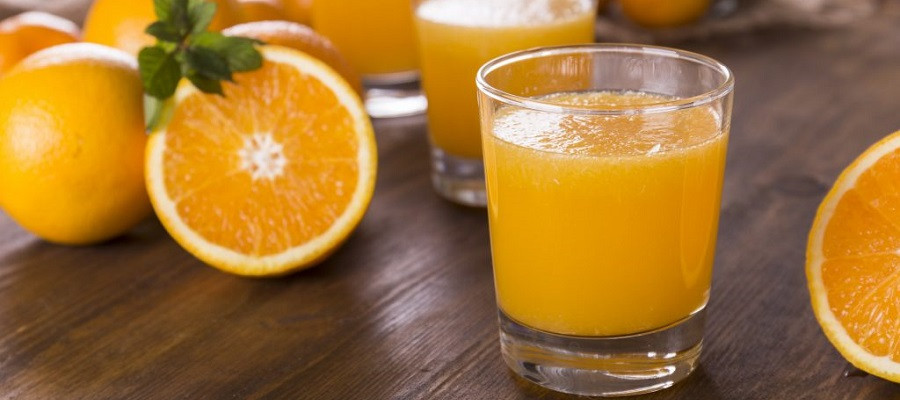Follow an orange through the behind-the-scenes testing on its journey from harvest to table

Follow an orange through the behind-the-scenes testing on its journey from harvest to table

What goes into ensuring the food and beverages on your table are safe and healthy?
Food scientists and policy makers around the world work together to determine evidence-based, effective regulations that ensure safety, quality, and nutritional content. The Codex Alimentarius provides food standards, guidelines, and codes on a global scale and is produced collaboratively by the World Health Organization (WHO), the Food and Agriculture Organization (FAO) of the United Nations, and the Organisation for Economic Co-operation and Development (OECD). Individual governments, many of whom are involved in the above efforts, appoint regulatory agencies to oversee local policies.
The typical path from farm to table is lengthy and well-regulated. In this article, we follow that journey through the behind-the-scenes testing, using as an example an orange, from picking through processing to reach your table as orange juice.
AT THE ORCHARD
Quality measures begin early for our orange. The farmer will check ripeness of the crop before harvesting by sampling and assessing key indicators: color, percent juice, sugars, and acids. Sugar and acid levels are inversely correlated—as the orange matures, acids and starches degrade, lowering acid content (measured via titration) and raising sugar content (measured with refractometers in °Brix). The Brix/acid ratio thus indicates both maturity and quality and is checked repeatedly through the process. Following standards for each parameter allows the farmer to harvest our orange at exactly the right time.
AT THE PROCESSING FACILITY
Quality checks continue during processing. All oranges going to market are checked for signs of pest, temperature, or mechanical damage, physical defects, and signs of degradation or disease. Our orange rolls along a conveyer belt in the processor facility with the rest of its lot, getting graded, washed, and size-sorted before being sent to the extractor. The juice is separated from peel oil and solids, collected, and clarified before pasteurization to prevent microbial growth. The juice can either be concentrated or moved forward whole and is stored either frozen or aseptically.
AT THE LAB
Once ready for packaging and market, the orange juice is analyzed for authenticity, quality, and composition, including nutritional analysis. Samples receive a full lab tour thanks to a wide range of standard analytical methods.
At the first stop, the samples are run through a bevy of benchtop assays. Starting with gravimetric testing, total dry matter (using vacuum-oven drying) and total solids are measured. Analysis starts here for dietary fibers—a large, diverse group that’s difficult to quantify as a whole—with enzymatic-gravimetric analysis of insoluble fiber. The filtrate containing the soluble fiber is carried forward.
Fructan, antioxidant (carotenoids), and vitamin (B2,B3, and C) analyses are performed using colorimetry and fluorimetry techniques employing either a spectrophotometer or visual assessment using the König reaction or 2,6-Dichloroindophenol (DCIP) titration.
Over by the incubators, the samples are prepped for microbioassays. B-complex vitamins folic acid, pantothenic acid, and pyridoxine are all quantified after enzymatic or chemical extraction and Lactobacillus or Saccharomyces growth assays.
Next up is high pressure liquid chromatography (HPLC). First, the soluble fibers within the filtrate are distinguished. HPLC is also used to quantify preservatives (such as benzoic acid, sorbic acid, and methyl and propyl esters of p-hydroxygenzoic acid), flavonoids, free amino acids, fumaric acid, Vitamin D compounds, and hydroxymethylfurfural, a degradation product of Vitamin C.
The samples can then move to carbohydrate analysis using high-performance anion-exchange chromatography with pulsed amperometric detection (HPAEC-PAD). Using optimized waveforms, sugars (fructose, glucose, and sucrose) and sugar alcohols (like sorbitol, mannitol, and xylitol) can be resolved and quantified together with excellent specificity and sensitivity. In addition to nutrition data, these results can identify contamination and adulteration, detecting, for example, partially inverted beet sugars modified to resemble orange sugars. Stable isotope mass spectrometry is also sometimes employed to check for adulteration, looking for added water or sugar using hydrogen, carbon, and oxygen isotope ratios.
Samples complete the tour with metals analysis—inductively coupled plasma mass spectrometry (ICP-MS) for heavy metals with maximum tolerance levels in the parts per million and atomic absorption spectroscopy for sodium, potassium, calcium, and magnesium. Once samples pass the tests, the orange juice is free to be distributed to local markets.
Our orange made it through a wide range of analytical tests that share a commonality—their need for application-appropriate, reliable filters. Filtration methodology details can have a large impact on reproducibility and data integrity.
As a leader in the food and beverage testing industry, Whatman™, a part of Cytiva, a Danaher company, has the expertise, products, and experience to support analysis that meets the exacting standards set in the codex and maximizes measurement validity and data integrity across applications. Whatman™ covers the full range of specialized analytics, helping to keep oranges and everything else on the table healthy and safe.
Type and Press enter